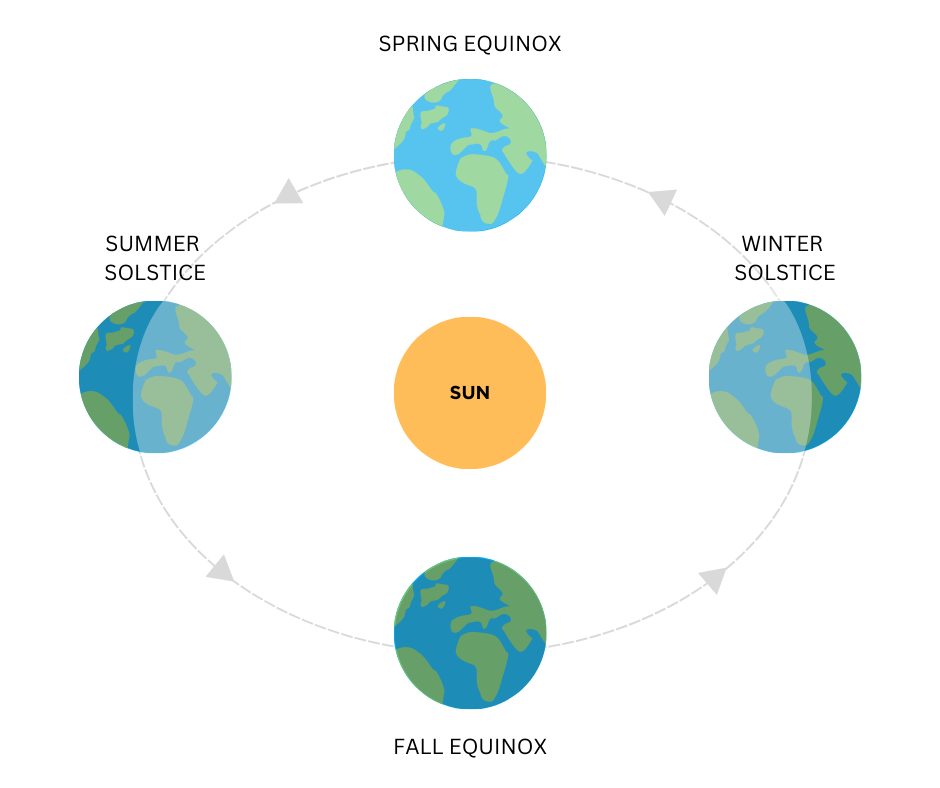Twice a year, the Earth's axial tilt and its elliptical orbit around the Sun create spectacular astronomical events known as equinoxes and solstices. These celestial occurrences mark significant moments in our planet's journey around the Sun and have captivated human curiosity for centuries.
What is an equinox?
Equinoxes occur when the Earth's axis is neither tilted away from nor towards the Sun, resulting in equal day and night lengths worldwide. There are two equinoxes each year: the vernal (spring) equinox and the autumnal equinox. During the vernal equinox, which takes place around March 20th, the Sun crosses the celestial equator, and day and night are of approximately equal length in both hemispheres. Conversely, the autumnal equinox, around September 22nd, marks the transition from summer to autumn, once again bringing a balance between daylight and darkness.
What is a solstice?
Solstices, on the other hand, mark the extreme points of the Earth's axial tilt. During the summer solstice, around June 21st in the northern hemisphere, the North Pole leans towards the Sun, resulting in the longest day and the shortest night of the year. In the southern hemisphere, this date marks the winter solstice, where the South Pole is tilted away from the Sun, leading to the shortest day and the longest night. Conversely, the winter solstice in the northern hemisphere (around December 21st) and the summer solstice in the southern hemisphere bring about a reversal in the lengths of day and night.
The occurrence of equinoxes and solstices is due to the Earth's axial tilt of approximately 23.5 degrees and its elliptical orbit around the Sun. As the Earth revolves around the Sun, different parts of the planet receive varying amounts of sunlight, creating the changing seasons. Equinoxes and solstices act as key markers in this seasonal cycle, representing important astronomical events that affect climate, agriculture, and cultural celebrations worldwide.
Cultural significance
Equinoxes and solstices have held significant cultural and spiritual importance across different civilizations throughout history. Many ancient cultures built monuments aligned with these celestial events, such as Stonehenge in England and Chichen Itza in Mexico. These structures served as astronomical observatories, indicating the precise moments of equinoxes and solstices. Various cultural celebrations and festivals are also linked to these celestial events, symbolizing the transition of seasons, rebirth, and renewal.
Equinoxes and solstices are often accompanied by unique natural phenomena that inspire awe and wonder. For example, during the equinoxes, a phenomenon called the "equinox sun alignment" occurs at certain locations, where the rising or setting Sun aligns perfectly with architectural features, casting stunning shadows or illuminating specific areas. Additionally, solstices are associated with mesmerizing natural occurrences like the midnight sun in polar regions, where the Sun remains visible for 24 hours during the summer solstice.

